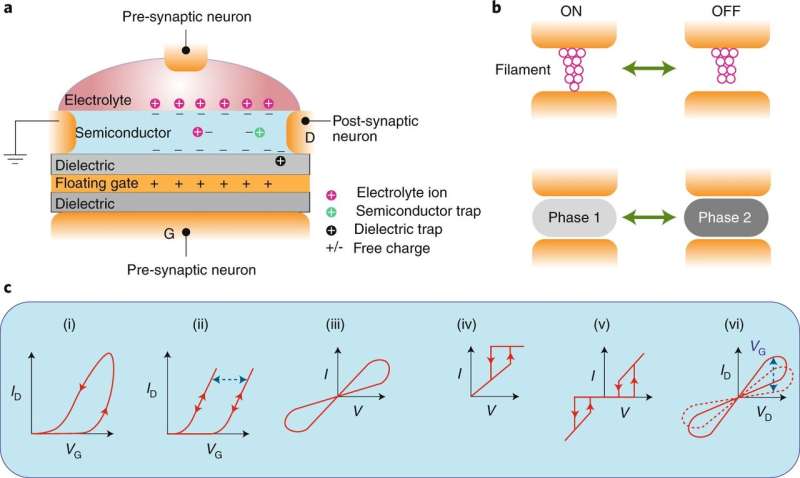March 3, 2020 report
A survey of emerging neuromorphic devices and architectures enabled by nanomaterials

A pair of materials science and engineering researchers at Northwestern University has conducted a survey of emerging neuromorphic devices and architectures that might be enabled by the use of nanomaterials. In their paper published in the journal Nature Nanotechnology, Vinod Sangwan and Mark Hersam outline the three main types of nanomaterials that could replace the much larger components currently used in computing systems.
As Sangwan and Hersam note, computer technology is at a crossroads. Computer scientists and users alike want a continuation of the progress that has occurred over the past few decades into the future. The devices of today represent a very significant improvement over those of just two or three decades ago. But there are two main obstacles just over the horizon that will prevent such improvements in the future: size and power.
Engineers are moving ever closer to the physical size limitations of computer chips—physics dictates that microcircuitry can only be made so small. This means that something else will have to replace them if computers are to continue advancing. The other issue is the amount of energy that computers use. Prior research has shown that the types of neural networks that are planned for the future require more energy. Some have estimated that it would take more than is being produced in the entire world today. In this new effort, the researchers address the second problem and suggest the answer lies in making computers using nanomaterials. They go on to conduct a survey of such devices and architectures that are currently the focus of research efforts.
To carry out their survey, the researchers break down what they describe as neuromorphic devices by three types of nanomaterials: zero-dimensional, one-dimensional and two-dimensional. They note that each has its advantages and disadvantages, such as the optical properties of 0D photonic systems and the resemblance of 1-D nanomaterials to tubular axons. Even the largest of the group, two-dimensional nanomaterials, can be used for things like synaptic resistors or as the structure for multilevel memory chips. They also note that all three nanomaterial types exhibit significant synaptic plasticity, which would bring such devices closer to mimicking the human brain.
More information: Vinod K. Sangwan et al. Neuromorphic nanoelectronic materials, Nature Nanotechnology (2020). DOI: 10.1038/s41565-020-0647-z
Journal information: Nature Nanotechnology
© 2020 Science X Network




















